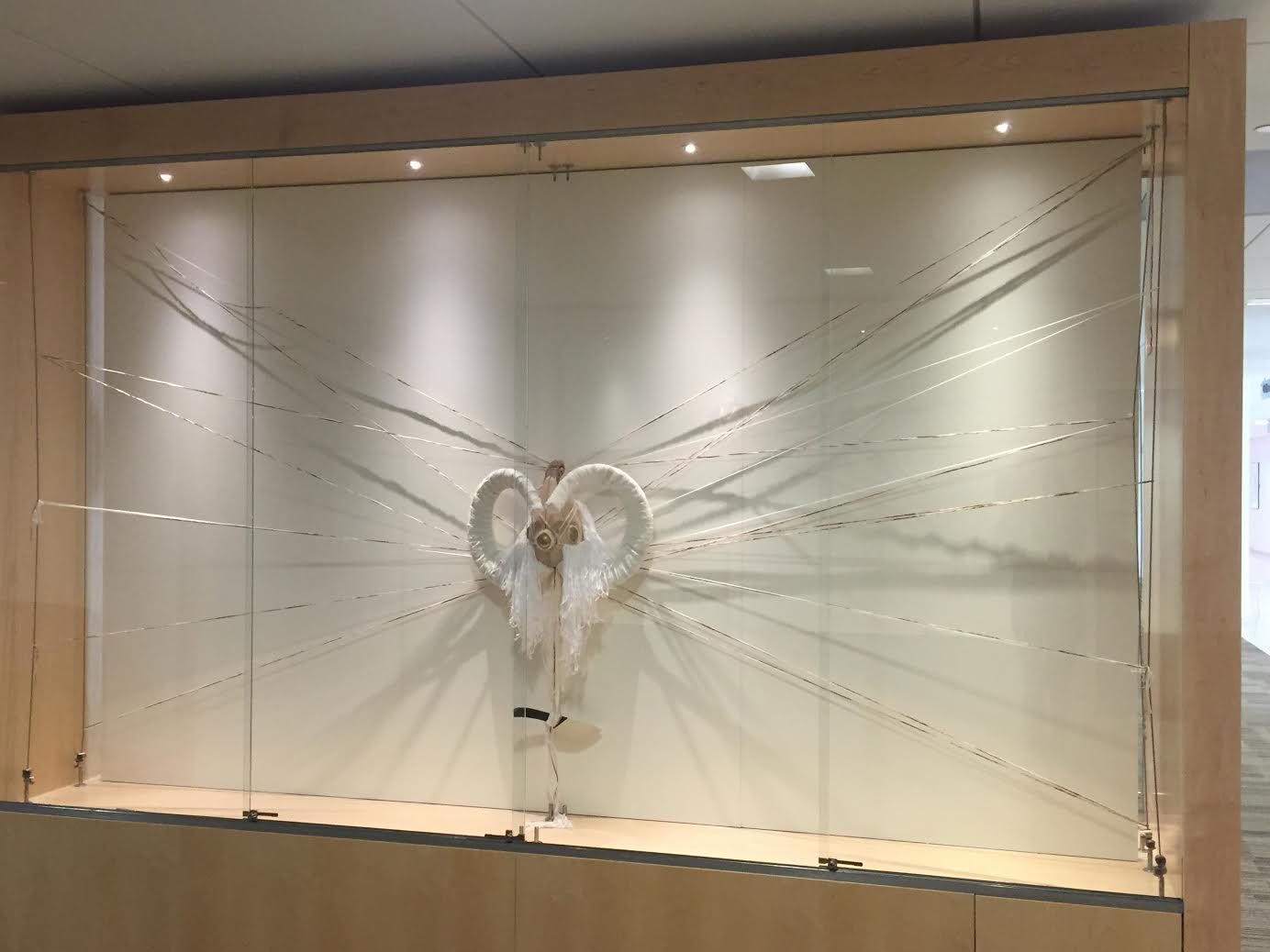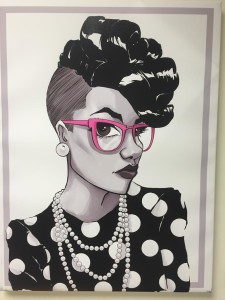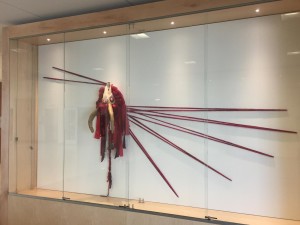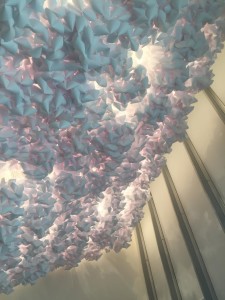
The Lory Student Center has been displaying artwork since Jack Curfman opened its first exhibit back in 1968.
The Curfman Gallery, as it is now called, used to be located in the lower level of the LSC. After the massive renovation of the student center in 2013-14, the gallery now is on the second floor of the LSC, taking advantage of better lighting and access.

There are three new exhibits on display in the Hallery, Duhesa and Curfman galleries this semester.
“It is very rare to have three new exhibits opening at the same time in the building,” said LSC Arts Program Manager Doug Sink.
The Hallery exhibit is located in the lower level of the LSC. It is dedicated to CSU student and alumni artwork. It currently features the work of CSU alumna Moriah Hummer. On display are a series of digitally painted portraits in black and white with pink accents. Hummer is also the author of Flat Track Furies, a comic featuring a women’s roller derby team that fights crime and monsters. An artist’s reception will be held from 4:30 to 7 p.m. on Feb. 10 in the Hallery. The exhibit will remain in the Hallery until March 15.
 The Duhesa Gallery exclusively displays contemporary Native American art. The Duhesa Gallery is a collaborative effort between the LSC Arts Program and the Native American Cultural Center. This gallery is currently featuring work from artist Cannupa Hanska called Reliquary. Hanksa’s work contains ceramic skull forms and string composed into patterns in display cases. The opening reception will be held from 4:30 to 6:30 p.m., on Feb. 23, and this exhibit will remain open in Duhesa until June 1.
The Duhesa Gallery exclusively displays contemporary Native American art. The Duhesa Gallery is a collaborative effort between the LSC Arts Program and the Native American Cultural Center. This gallery is currently featuring work from artist Cannupa Hanska called Reliquary. Hanksa’s work contains ceramic skull forms and string composed into patterns in display cases. The opening reception will be held from 4:30 to 6:30 p.m., on Feb. 23, and this exhibit will remain open in Duhesa until June 1.
The Curfman Gallery exhibit titled mammatocumulus opened Jan. 28 at a reception with artist Mark Rumsey, who works with different types of paper and lighting. He suspends folded paper forms from the ceiling, making for a whimsical atmosphere.  Rumsey’s work focuses on social experiences and creating different communities. He welcomed students to work on the exhibit.
Rumsey’s work focuses on social experiences and creating different communities. He welcomed students to work on the exhibit.
“A major portion of the art is the experience — the community created this through the shared work of making the exhibit happen,” Sink said. “In some ways, the installation is more of a physical record of the community experience.”
The mammatocumulus exhibit will remain open until March 5.